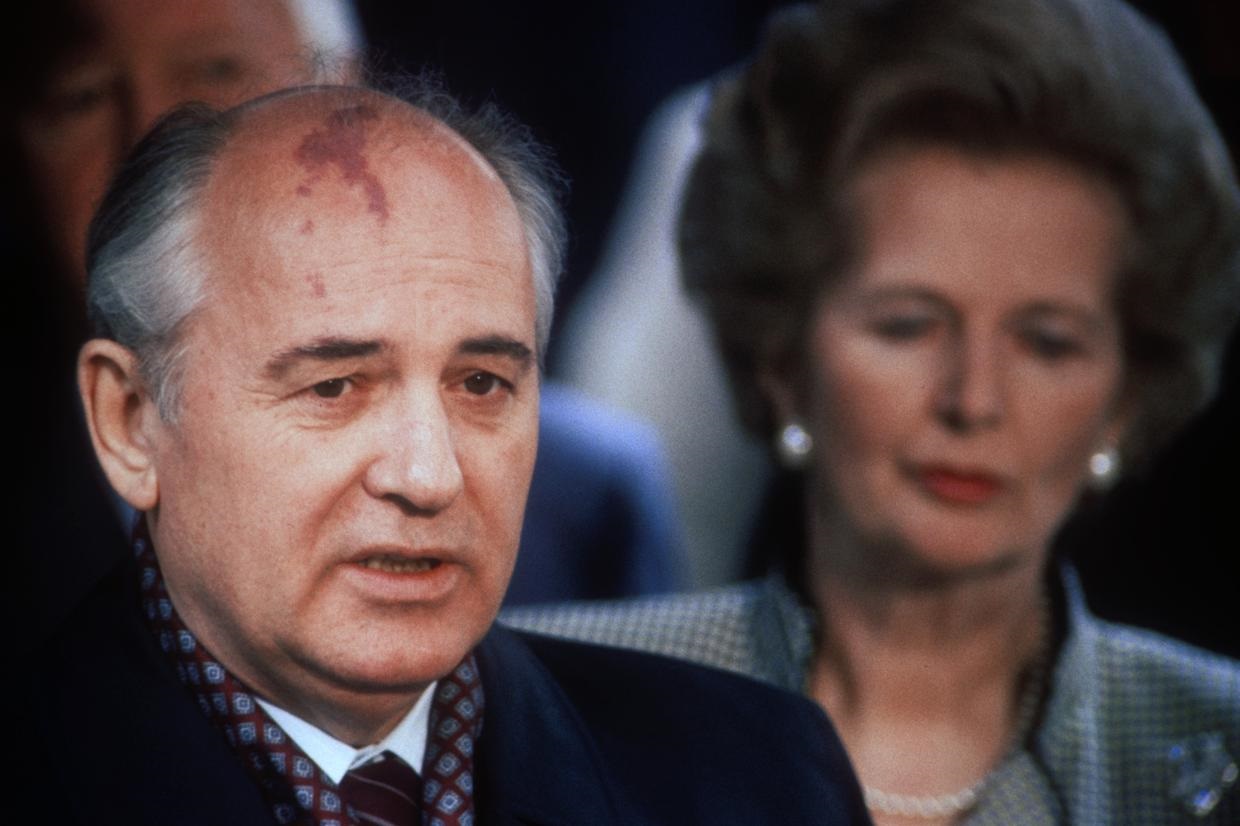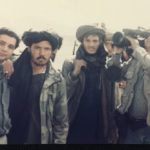Agha Iqrar Haroon
30 years of history between August 18, 1991, to August 15, 2021, had told us the fall of the Soviet Union and the political fall of the United States and its allies—– Ironically, all events are directly or indirectly related to Afghanistan—– Is it not astonishing?
A questionable coup that is still wrapped under controversies and reversal of coup during August 18 to 21 August 1991 in Moscow resulted in the disintegration of Soviet Union in December same year.

Soviet leader Mikhail Gorbachev who signed Geneva Accord in 1988 and withdrew from Afghanistan rose as a hero for western countries and the Russian masses. Cold War was practically over under the liberal reforms of Gorbachev and the fall of the Soviet Empire was just a ceremony of what had already happened during the last two and half years—from 1988 to December 1991.
The Soviet Union left Afghanistan on 15 February 1989 but continued economic support of Kabul regime till USSR was officially collapsed. Soviet-installed government in Kabul survived over three years after Soviet soldiers left Afghan land.
After Peshawar Accord that was signed on April 24, 1992, new Russia discontinued all its linkages in Afghanistan. I was working for daily The Frontier Post and covered press conferences that took place after Peshawar Accord and I went from Lahore to Peshawar for witnessing history being made in Peshawar University Town. Whatever took place between April 1992 to an invasion of the Taliban in 1996, is a story of failure and short-sightedness of the Peshawar Accord that distributed Afghanistan as a family empire among stakeholders.
The official text of the Peshawar Accord is hereunder to understand how did Mujahedeen distribute Afghanistan as a piece of cake among themselves.
In the Name of Allah, the Most Beneficent, the Most Merciful
Salutation and peace be upon the Great Messenger of Allah and his Progeny and Companions.
The structure and process for the provisional period of the Islamic State of Afghanistan, was formed as under:
- It was decided that a 51 persons’ body, headed by Hazrat Sahib Sibghatullah Mojaddedi, would go inside Afghanistan so that they could take over power from the present rulers of Kabul, completely and without any terms and conditions during the two months period. The head of this body will also represent the Presidency of the State during these two months. After this period, this body will remain as an interim Islamic Council, along with the Transitional State and its Chairmanship will be held by Hazrat Sahib. The period of this Council, will also be for four (4) months.
- It was decided that Professor Rabbani will remain as the President of the Transitional Islamic State of Afghanistan and the head of the Leadership Council for four (4) months. He will commence his work officially at the time when the two months of the transfer of power will be elapsed.
- The above-mentioned period will not be extended even by a day.
- The Prime Minister and other members of the Cabinet will be appointed from the second grade members of the Tanzeemat, on the discretion of the heads of the Tanzeemat.
- The Prime Ministership was assigned to the Hizb-e-Islami, Afghanistan.
- The Deputy Prime Ministership and the Ministry of Interior, to Ittehad-e-Islami, Afghanistan.
- The Deputy Prime Ministership and the Ministry of Education, to Hizb-e-Islamic of Maulvi Khalis.
- The Deputy Prime Ministership and the Ministry of Foreign Affairs to the National Islamic Front.
- The Ministry of Defence to Jamiat-e-Islami, Afghanistan.
- The Supreme Court to Harkat-e-Inqilab-e-Islami Organization.
- It was also decided that the Leadership Council, in addition to making the division of appointments in the Ministries, will also determine Ministries for Hizb-e-Wahdat, Shura-e-Etelaf (Council of Coalition) Maulvi Mansoor and other brothers.
- The total period of this process will be six months. As regards to Transitional Government, the Islamic Council, will make unanimous decision. The period of this Transitional Government will be two (2) years.
These arrangements caused a dreadful civil war for the next four years and major destruction in and around Kabul was caused by the civil war of four years, not due to the Soviet War.
The rest of the story is the rise of the Taliban, their four years’ rule, their disappearance from Afghanistan, and then their reemergence to Kabul on August 15, 2021. A 30 years’ history from 1991 to 2021 is written with the blood of Afghan people. 30 years ago, Washington was smiling and now Kremlin is smiling—- both smiling for what had happened to their enemy. In all these last 30 years, Afghanistan was in the headlines of international media. Covering the Afghan war from 1996 onward, the most important event I missed was “The Fall of Kabul” on August 15, 2021. What did I cover from 1996 to 2006 in Afghanistan was just an unimaginable brutal history of the greed of humanity in the lust of power-seeking and blood-sucking.
The United States did the same blunder in Afghanistan that was done by Mujahideen while signing Peshawar Accord. Power-sharing formulas based on Pushtun– non-Pushtun ethnic groups, share for warlords, share for US contractors and share for ISAF countries made another complex government that was non-operational having no roots among masses. Afghanistan again was taken as a piece of cake and the mindset of pleasing everybody by offering shares repeated the history of early 90s. Bonn Agreement was worse than the “Peshawar Accord” and only two presidents in 19 years of so-called democracy played havoc with Afghanistan. Corruption, nepotism, throbbing narco business, infighting among political groups, and no clear directions for so-called nation-building provided moral support to the Taliban who reemerged in suburban areas around 2014.
Another dreadful error of judgment of Karzai and Ghani was to use India against neighbouring Pakistan and their quest to place India as a stakeholder although India had no proximity or historic linkages with Afghanistan. Kabul became a launching pad for destabilising Pakistan and Tehrik-e-Taliban Pakistan (TTP) was sponsored and launched against Pakistan around 2004. The United States and allied forces had all information but did not stop the former Kabul regime from playing with fire. Pakistan faced the brunt of this horrific conspiracy but survived after sacrificing over 72,000 innocent civilians and thousands of sons of the soil in uniform. Today, there is no NDS in Afghanistan, no TTP left and the Kabul regime is the story of the past. India emerged as the biggest loser in the game and now licking dust in Kabul. Indian Independence day celebrations were converted into a crying day by Taliban by reaching Kabul and Ghani’s fleeing to Tajikistan.
The Fall of Kabul was not instant or surprising because everybody who has analytical thinking knows that US airpower was the only lifeline for the Afghan National Army (ANA). I think the US knew that Kabul would fall when air raids would no more provide cover to ANA.
Now sitting at the confluence of River Kabul and River Indus, I see colors of two waters mingling with each other. People say Kabul River is muddy but to me, it looks reddish—– and for me, it is a Bloodline of History, not a river.
Note: Agha Iqrar Haroon is a senior journalist from Pakistan working in the field since 1988. He covered the Afghan war during 1995-97 and then during 2001-2006 while working with national and international media outlets including WTN News Agency, ETN News Agency, the News International, Abu Dhabi Television, and Al-Jazeera News.
Disclaimer:
The views and opinions expressed in this article/Opinion/Comment are those of the author and do not necessarily reflect the official policy or position of the DND Thought Center and Dispatch News Desk (DND). Assumptions made within the analysis are not reflective of the position of the DND Thought Center and Dispatch News Desk News Agency.



